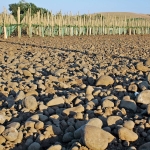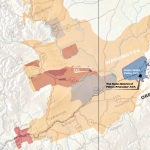The recent federal approval of a new American Viticulture Area (AVA) in Milton-Freewater, Oregon, is lauded by the wine industry, but has created a need for change in the AVA regulations.
A joint press release from the Oregon Wine Board, Washington State Wine Commission, and Walla Walla Valley Alliance announced the new AVA and shared that the new designation will help wine producers better tell the story of a unique place (terroir).
But within days of the new wine district’s creation, the Alcohol and Tobacco Tax and Trade Bureau published a proposed change to the regulations that govern AVA names as appellations of origin on wine labels.
The Rocks District of Milton-Freewater AVA is a sub-appellation within the Walla Walla Valley AVA, which in turn is entirely within the larger Columbia Valley AVA.
Both Walla Walla Valley and Columbia Valley AVAs include vineyards on both sides of Washington and Oregon state lines. However, The Rocks District is entirely within Oregon boundaries. It is the 18th AVA established in Oregon.
The Rocks AVA contains about 3,770 acres and currently has 250 acres of wine grapes and 19 wine producers.
The district is at 850 to 1,000 feet above sea level and is less susceptible to winter damage than other locations in Walla Walla Valley.
The AVA application effort was organized by Steve Robertson of Delmas/SJR Vineyard, along with seven other wine growers and producers. Dr. Kevin Pogue, a geology professor at Whitman College in Walla Walla, Washington, submitted the AVA petition to the federal agency.
As the name implies, rocks—more like cobblestones—are the distinguishing feature of the district. The dark-colored basalt cobblestones help with soil drainage, ensure deep root growth, and absorb heat from the sun.
The solar radiation is said to promote early growth in the spring and assist with ripening during late summer and early fall.
Crops have been cultivated from the area since the late 1800s. Apples, cherries, prunes, and plums are still commercially grown there.
Christophe Baron, owner/winemaker of Cayuse Vineyards who began planting wine grapes in the area in 1997, has been credited for bringing attention to the district’s rocky soils. The rocky soils remind Baron of those in the famous Châteauneuf-du-Pape appellation in France.
State boundaries
But the new AVA has highlighted a labeling issue now under consideration for change.
Current rules require a wine labeled with an AVA name as an appellation of origin to be fully finished within the state in which the labeled AVA name is located.
The Bureau recently proposed to allow wines labeled with an AVA to be fully finished in any state adjacent to the state in which the AVA is located. (For multi-state AVAs, like Walla Walla Valley or Columbia Valley, the wine must be fully finished within one of the states in which the AVA is located.)
The state location issue has created a problem for 16 of the 19 wine producers located within The Rocks District.
Only three have wineries in Oregon; 16 have wineries or use custom crush facilities located on the Washington side of the Walla Walla Valley or elsewhere and are therefore prohibited from using The Rocks District of Milton-Freewater on their label.
In its proposed rulemaking, the Bureau stated it recognized the burden the existing rule would put on some wine producers in the new AVA who would have to travel more than 200 miles to the nearest custom crush facility in Oregon or build their own private winery in Oregon in order to display The Rocks District of Milton-Freewater AVA.
The Bureau believes that vintners, grape growers, and consumers would benefit from the removal of the requirement mentioned above and has initiated proposed rulemaking.
Comments on the proposed rule Notice No. 147 will be accepted through April 10, 2015, and can be found at www.regulations.gov within Docket TTB-2015-0003. •








Leave A Comment